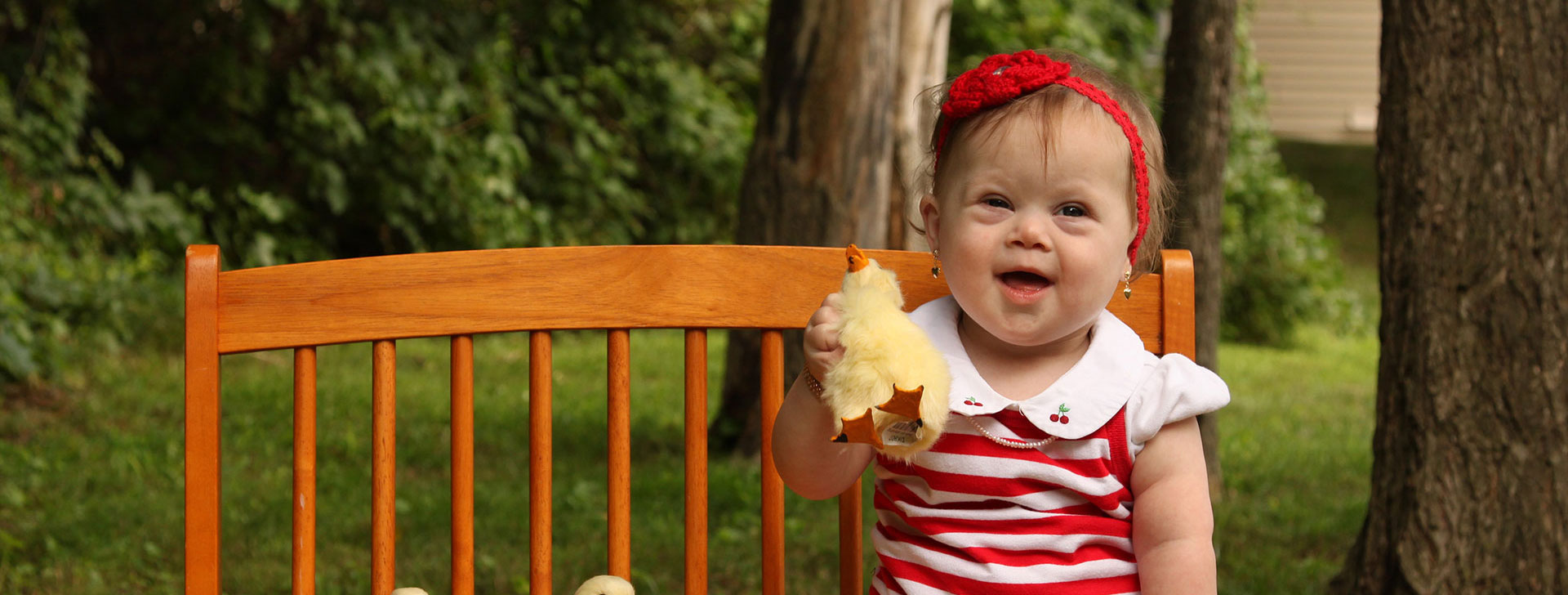Roizy Spitzer
Bruchy is my fifth child; she was born with Down syndrome and is the highlight of our family. She was developing nicely and reaching milestones sooner than expected. At 2 weeks old she was holding her head up when on her tummy. At 5 months old she rolled over. At 10 months of age Bruchy started exhibiting a startle reflex, or so we thought. Any time she would be startled by noise or touch, her head would drop for half a second. If she was laying on the floor and I picked her up unexpectedly, her head automatically dropped for a very short time. It didn’t dawn on me that this can be a neurological issue since it occurred mostly when she became startled. I was able to initiate it, touch her unexpectedly, and then she would have the head drop. The head drops were becoming more frequent but I still was unaware that this was an urgent matter.
When we were locked home at the onset of the coronavirus, we were having a zoom session with one of Bruchy’s therapists, Lynn Walker. She had a head drop during the session and Lynn was very concerned about it. She gently told me that I need to check it out with a neurologist as quickly as possible. Thanks to Lynn I realized that this matter requires serious attention. We tried to get an appointment with a neurologist but the soonest availability was in several months. I reached out to a woman whose daughter had infantile spasms and she described the same head drops that Bruchy was experiencing. She told me that Chaim Medical had guided her. I contacted them as well. They advised me to rush to the emergency room so that Bruchy can be checked with an EEG if she was indeed having seizures. We called an ambulance and rushed to the ER. There, the doctors stuck EEG probes onto her head and we were admitted to the hospital. I told the doctor that I can initiate the head drops by startling Bruchy; they told me to do so, so that they can check the brain activity when she had the head drops. The next morning a neurologist came by and told me that the EEG was picking up seizure-like activity. Bruchy was started on Vigabitrin powder on the lowest dose, with a goal of gradually tripling that dosage. Baruch Hashem, Bruchy’s head drops stopped completely as soon as she started the medication. I went for a second opinion to the very qualified neurologist at NYU Medical Center in New York City, Dr. Orrin Devinsky. He said that since the head drops stopped completely after starting on the lowest dosage, we can remain at that measure. He also told us that in his 30 years of experience, most kids with Down syndrome outgrew infantile spasms sooner than typical children, who usually have more severe cases. I always knew that Down syndrome rocks; now I was totally convinced.
Once again it was Lynn to the rescue. Lynn was Bruchy’s Occupational Therapist but she was also trained and experienced in many different areas. She realized that Bruchy developed CVI – Cortical Visual Impairment – from her infantile spasms. CVI is a form of visual impairment that is caused by a brain problem rather than an eye problem. We were fortunate that Lynn was knowledgeable in this area because frequently CVI is overlooked by ophthalmologists, since the eye looks perfect. In the case of CVI the brain doesn’t interpret properly what the eye sees. The therapies done for Bruchy’s CVI are meant to stimulate her brain so that she can see properly. Thankfully, with her early diagnosis, her vision is progressing every day.
Baruch Hashem Bruchy is a bright and energetic little girl who brings much joy to her family. She lives up to her name and is a real bracha!
Infantile spasms can be easily missed. It is extremely important for every mom to be educated and aware of what to look out for since it needs to be addressed immediately in order to avoid any brain damage. If your child is having head drops or any other abnormal head movement, don’t fret, just check it out and B’ezras Hashem with the right treatment your child will be fine.

